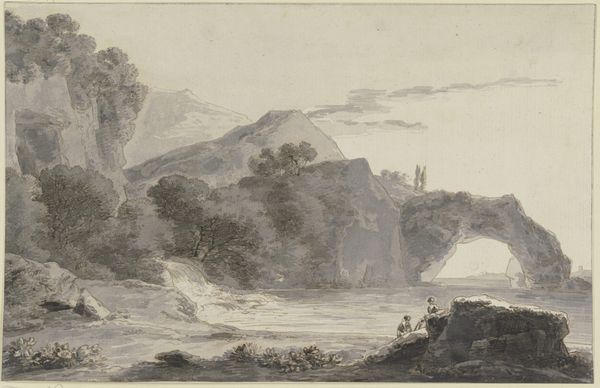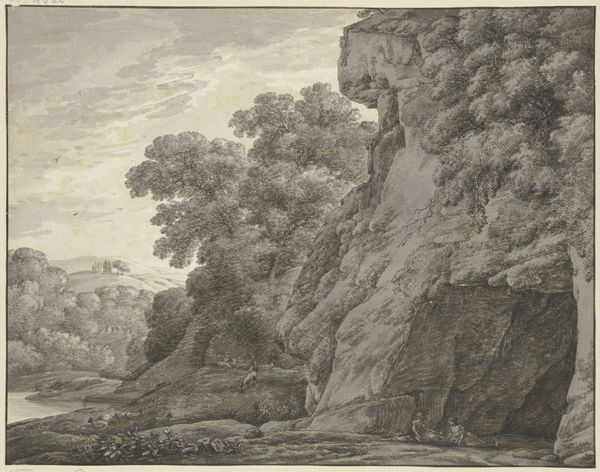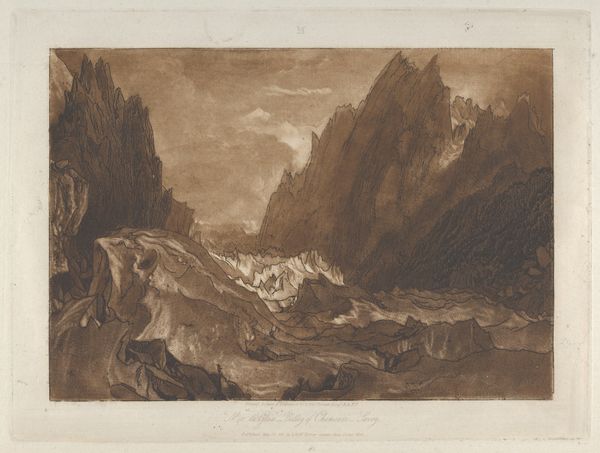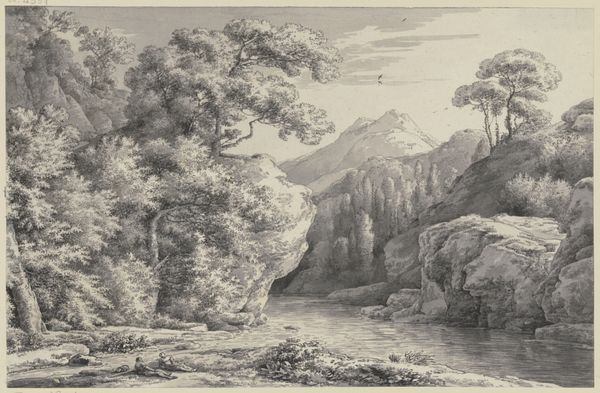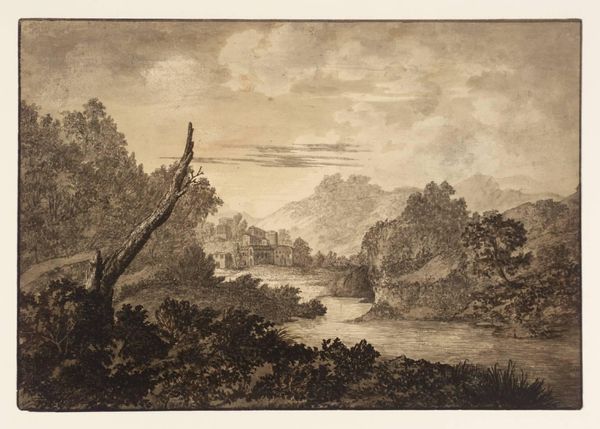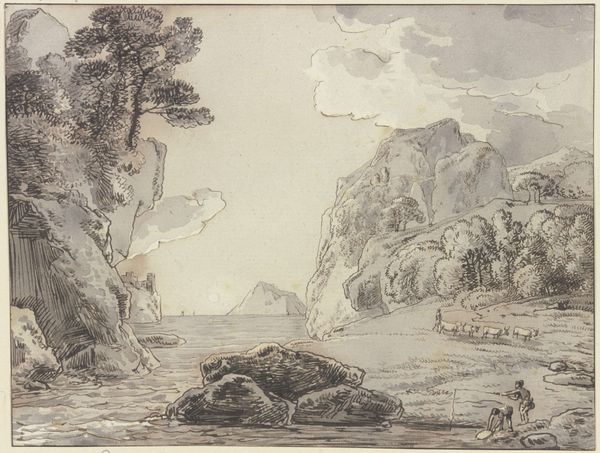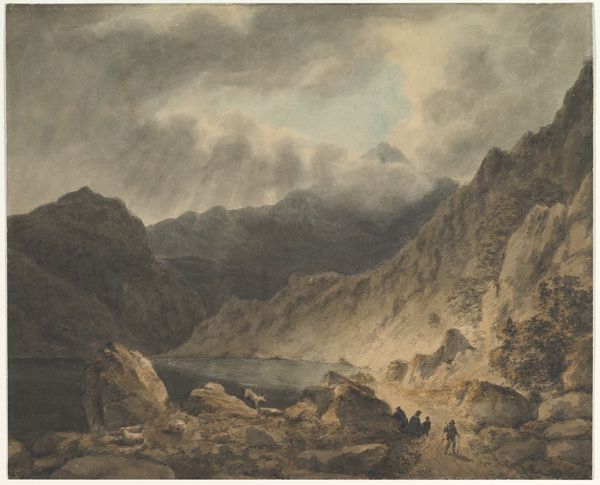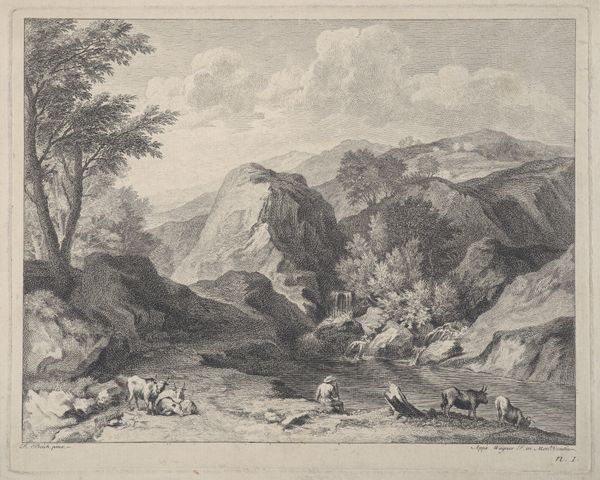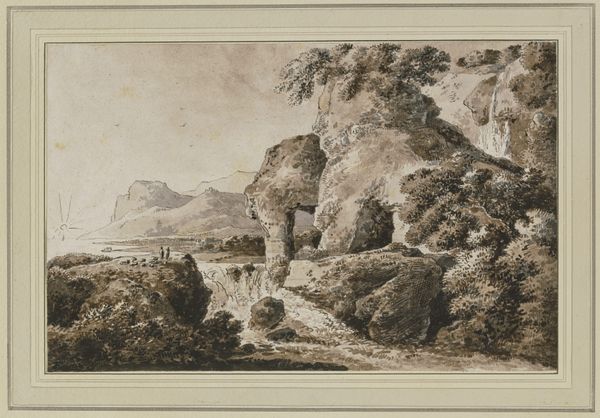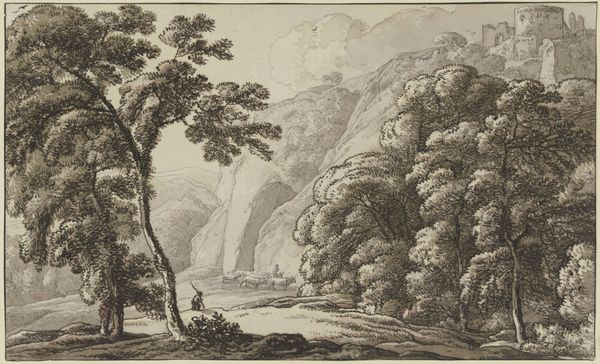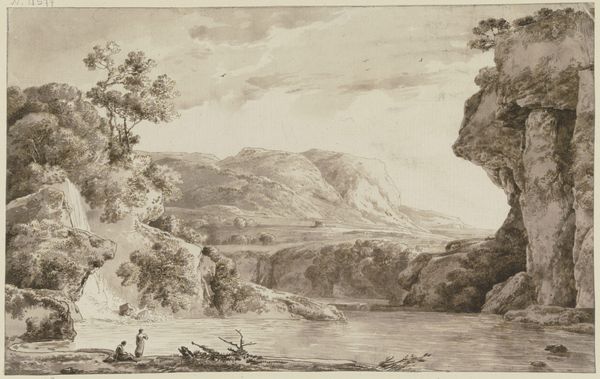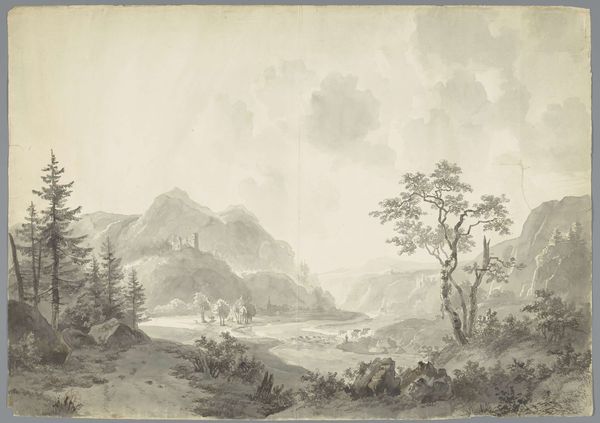
Dimensions: Sheet: 10 3/8 x 14 1/8 in. (26.4 x 35.9 cm)
Copyright: Public Domain
Curator: Immediately striking, isn't it? This is William Gilpin's "Landscape with Hill, Lake and Figures," likely created between 1767 and 1777. It's a beautiful example of his aesthetic theories. Editor: Yes, a brooding quality to it. Almost monochrome, with those misty forms receding into the distance. The stark contrasts are really affecting. Is it watercolor? Curator: Indeed, watercolor and pencil, and some areas possibly with charcoal. The layering and the strategic deployment of light create a real sense of depth, drawing the eye through carefully composed visual planes. The interplay of forms – the jagged hill contrasting with the smooth lake—is really remarkable. Editor: It feels almost like a proto-photographic study, exploring gradations of light and shadow. You can practically feel the roughness of the paper beneath the wash. I'm interested in how Gilpin achieves this atmospheric perspective with what looks like fairly basic materials. What kind of pigments were typically available then, I wonder, and what processes did he employ for layering? Curator: His focus, of course, was on the picturesque—that middle ground between the beautiful and the sublime. He sought to formalize principles, almost mathematically arranging nature. Semiotics comes into play. What meaning did he seek in these established forms? Editor: It’s interesting that he aims for something both visually compelling and structurally reasoned. Where did Gilpin get his paper, his brushes, the raw materials for his paints? How were those items sourced, and by whom? The Romantic idea of untamed nature feels rather curated when we examine the social fabric that produced such landscapes. Curator: Your emphasis is compelling—and your questions do encourage consideration of larger socio-historical dynamics in ways I had perhaps understated. It reveals how different approaches can truly augment comprehension. Editor: Likewise. Thinking about the material processes helps to appreciate the intellectual structure, bringing depth to my aesthetic experience.
Comments
No comments
Be the first to comment and join the conversation on the ultimate creative platform.

